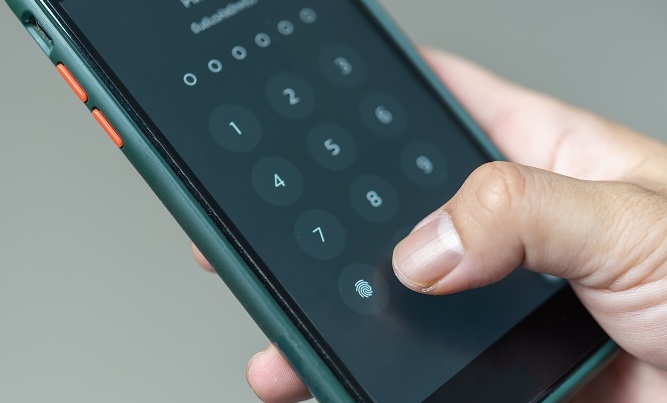
 Data Structure
Data Structure Networking
Networking RDBMS
RDBMS Operating System
Operating System Java
Java MS Excel
MS Excel iOS
iOS HTML
HTML CSS
CSS Android
Android Python
Python C Programming
C Programming C++
C++ C#
C# MongoDB
MongoDB MySQL
MySQL Javascript
Javascript PHP
PHPPhysics
Chemistry
Biology
Mathematics
English
Economics
Psychology
Social Studies
Fashion Studies
Legal Studies
- Selected Reading
- UPSC IAS Exams Notes
- Developer's Best Practices
- Questions and Answers
- Effective Resume Writing
- HR Interview Questions
- Computer Glossary
- Who is Who
What is the full form of EMM?
Introduction
Entitlement Management Message (EMM) transmits messages to decryption modules in set−top boxes or other devices to ensure that only authorised users may access the encrypted material.

Management of entitlement message access to encrypted data is managed during digital television transmission by a device known as Message, or EMM.
Viewers who have paid for certain channels or services are given information through it. The viewer's rights are described in these messages, along with which channels and how long they have been subscribers to. To protect their content from unauthorised access, broadcasters use conditional access systems, of which EMM is an essential component.
Purpose of EMM
Entitlement Management Message, often known as EMM is used for managing those who have access to encrypted information once digital television transmission is in effect. By transmitting data about their rights to decryption modules in set−top boxes or other devices, EMM ensures that only approved viewers who have paid for certain channels or services have access to the contents.
It helps in avoiding assault, pirated content, and other unlawful access to the content. EMM ensures that broadcasters can make income from their content and retain their business models by regulating access to the content. Ensuring that viewers can access the content they have paid for also contributes to a better viewing experience.
EMM Format
Entitlement Management Message, or EMM is a digital television broadcasting protocol used to control access to encrypted content. In most cases, EMM messages are delivered as part of a data stream that also contains the encrypted content, following a specified form that consists of the following fields:
Header − Describes the format and length of the EMM message.
Control Word − Contains the encryption key, which is often updated on a regular basis to increase security.
Entitlement (ECM) Control Message Identifier − shows which specific ECM relates to the EMM message.
Entitlement − Describes the viewer's entitlements, including which channels and for how long they are subscribers.
Message Authentication Code (MAC) − gives the EMM message a hash to make sure it was not tampered with during transmission.
Depending on the specific access condition system and encryption technique being utilized, the particular format of EMM messages may change. However, many implementations of the protocol have the fundamental structure that has been previously explained.
EMM in Mobile Networks
In mobile networks, EMM stands for "EPS Mobility Management". It is a protocol used to control User Equipment (UE) mobility in 4G mobile networks, including LTE.
The UE's network attachment as well as its session and mobility status updates are under the control of EMM. In order to work effectively, the EMM protocol must be utilized with the EPS (Evolved Packet System) architecture utilized in 4G mobile networks.

The EMM protocol is used to establish a secure connection with the network and authenticate the UE as it first joins the network. The EMM protocol is used to control the UE's attachment to the network and its mobility within the coverage area after it has been authenticated. Using defined formats and protocols, EMM messages pass between the UE and the network through the air interface.
These messages include instructions for the UE to perform various tasks, including connecting to the network, signing up for services, or switching between different network cells, as well as information on the UE's identity, location, and mobility state.
Conclusion
Entitlement Management Message, or EMM, is a protocol used in mobile networks to control user equipment mobility in 4G networks as well as in digital television broadcasting to control access to encrypted content. By communicating information about approved viewers' entitlements to decryption modules in set−top boxes or other devices, EMM in digital television broadcasting ensures that only viewers who have paid for certain channels or services may access the material. In mobile networks, EMM is in charge of maintaining the UE's session and mobility states, regulating its attachment to the network, and allowing seamless handovers across various network areas.
Frequently Asked Questions
Q1. What is the purpose of EMM?
Ans: EMM controls user equipment mobility on mobile networks and ensures that only authorized users have access to encrypted content or services.
Q2. How does EMM work?
Ans: EMM works by sending messages containing data about user entitlements or mobility statuses to the network in mobile communication systems or to decryption modules in set−top boxes or other devices.
Q3. Where is EMM utilized?
Ans: The transmission and consumption of digital television through 4G networks and mobile communication systems both use EMM.

